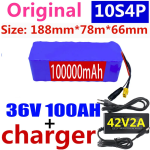Not what I meant, but that depends on the system and it's limits.
A motor runs slow at lower voltage. How much slower depends on the specific motor's characteristics.
But you have to first determine what voltage would do what you want with the motor you want to use, *or* (better) determine what motor you *need* to do what you want at the voltage you want to operate at.
You really should look at the simulator to understand how these systems work. It will take you less time and work to do that then to keep guessing what might work.

No idea.
Can't tell you how much work / time you will get out of any battery. You have to do the stuff already said to know that, or you have to build it and find out.
If they claim the same things as the other one, they're lying too.
You don't get small, cheap, high capacity, and good all in one thing. Just like the old saying "Cheap, Fast, Good--pick any two". If it seems too good to be true...it probably is. :/
It takes a certain amount of physical space and mass to do a certain thing. Batteries improve all the time, but you aren't generally going to find the newer, more energy-dense stuff that cheaply, unless it was scrapped out of something else for a reason (like recalled batteries that were fire risks for some reason, etc) or was worn out garbage that was suposed to be recycled but instead was taken apart and put into other things to be resold as new, etc. (like the first linked pack may be made of). In those cases you wont' get what the cells were designed for, because they aren't new.
Look around for 100Ah packs at the voltage you want. The ones that say they're heavier are more likely to be real, and the ones that say they're small and light are less likely to be so. The ones that don't state exactly what brand and model cells are in there are also less likely to be what they say they are--the ones that do state you can go look up those cell models and see if the pack could even do what it says with that number of cells.
Look up actual cells of the size stated in a pack, on their manufacturer specification sheets (spec sheets) that include testing data. And on sites like Lgyte-info.dk, battery/flashlight/etc forums, etc. There are cell testing threads here on ES as well. These things will tell you what various kinds of cells can typically do, so that you can compare to what sellers claim their packs can do.
Do you need that much capacity?
If not, you could save a lot of money, space, and weight.
But you'll have to do what was stated before to find out....
Just because they're all blue doesn't mean their insides are anything like each other.
To compare them you have to know exactly what is inside each one, and how it's connected, what BMS (if any) it has, etc. Without knowing that (which isn't usually possible without having it there to disassemble and examine and test for yourself), you could be comparing a Maserati to an empty snail shell.

No, that doesn't do the same thing. Winding a motor for a specific speed (kV, rpm/volt) means it operates differently than one wound for a different speed. (there are cases where compensating for the different winding is possible in various ways, but this specific one isn't like that). Also, a motor wound for higher speed has lower torque under the same system/conditions--so using a faster version of the motor means you won't get as much torque as you would if you used the same motor wound for a slower speed under the same system/conditions.
If you are willing to spend the time experimenting with and learning the ebikes.ca motor simulator, you'll see how these things all interact, and have a much better understanding of the parts involved, so that you can pick the right parts to do the job the first time, without as much guesswork.




